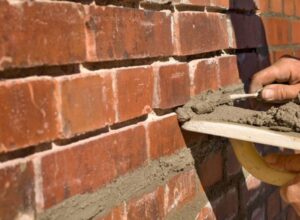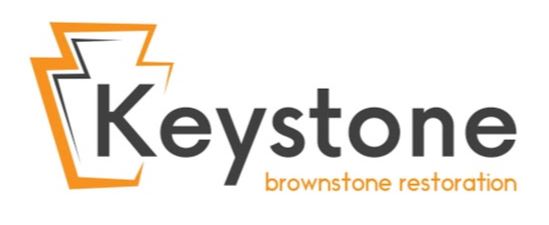Brick Pointing & Restoration
Services in New York
Introduction to Brick Pointing and Restoration
 Proper maintenance of brickwork is essential for preserving the structural integrity and aesthetic appeal of any masonry building or structure. Brick pointing, also known as repointing, and brick restoration are key processes in ongoing brick maintenance. Brick pointing involves removing deteriorated mortar from joints between bricks and replacing it with new mortar to restore weather tightness and appearance.
Proper maintenance of brickwork is essential for preserving the structural integrity and aesthetic appeal of any masonry building or structure. Brick pointing, also known as repointing, and brick restoration are key processes in ongoing brick maintenance. Brick pointing involves removing deteriorated mortar from joints between bricks and replacing it with new mortar to restore weather tightness and appearance.
Brick restoration encompasses a range of techniques, from cleaning to repairs, aimed at restoring brickwork to its original condition. The mortar joints in brickwork serve critical functional purposes – they bond the masonry units together, accommodate slight movements, and shed water.
However, mortar is inherently a sacrificial material that wears down over time. Exposure to weather, pollution, vegetation, and other factors can all cause mortar to deteriorate through processes like erosion, cracking, and missing joints. Left unaddressed, deteriorating mortar will lead to problems like damp walls, spalling bricks, efflorescence, and damaged structural integrity.
Through careful repointing and restoration offered by Keystone Restoration, damaged brickwork can be repaired and its lifespan extended significantly. Whether you need brick restoration near me or comprehensive brick restoration services, we have you covered. Proper repointing improves weather resistance and prevents water from infiltrating the wall structure.
Our restoration cleans off potentially damaging growth and repairs damaged brickwork. Together, these processes not only preserve brick buildings old and new, but also maintain their visual appeal. The underlying goal is to keep the masonry serviceable for generations to come.
Importance of Timely Restoration
Identifying and addressing deteriorated brickwork is crucial for maintaining the integrity and safety of buildings. Effective restoration methods such as repointing, thorough cleaning, and targeted brick repairs play a vital role in this process. By catching issues early, property owners can prevent more extensive damage that can become exponentially more dangerous and costly to fix later on.
For instance, replacing a few damaged bricks is a significantly less disruptive and more manageable task than having to rebuild entire sections of unstable walls, which can lead to further complications and expenses down the line.
Additionally, preserving historic brick structures holds immense value for maintaining cultural heritage and architectural aesthetics in our cities. Regular inspections, proactive brick repair, and comprehensive maintenance programs are highly recommended to identify and address deterioration at its onset.
This approach ensures that the beauty and structural integrity of brick buildings are upheld for future generations to appreciate and enjoy. By investing in timely restoration efforts, property owners contribute to the preservation of history and the cultural fabric of their neighborhoods.
Factors Affecting Brick Integrity
Some common causes of brick deterioration include:
Water infiltration: Water in cracked mortar damages brickwork, causing efflorescence, spalling, damp walls, and structural issues.
Freeze-thaw cycles: Water trapped in brickwork can freeze and expand in winter, damaging the masonry.
Settlement: Gradual leaning or sinking of a wall from soil movement stresses brickwork.
Pollutants: Acid rain and air pollution chemically attack brick surfaces.
Vegetation: Roots, vines, and leaves growing on walls retain moisture and dislodge bricks.
Salt crystallization: Salts borne by water or pollution crystallize inside bricks, spalling the surface.
Step-by-step guide to DIY Brick pointing
Essential Tools and Materials
Be sure to have these essential tools and materials on hand:
Tuckpointing tools – Specialty trowels for scraping out old mortar and packing in new mortar.
Masonry hammers and chisels – For removing stubborn old mortar.
Grout bags, guns, or buckets – For placing new mortar in the joints.
Mortar mix – Premixed type N mortar modified with hydrated lime and an appropriate sand aggregate.
Masonry saw – For cutting out larger cracked/missing sections if necessary.
Safety gear – Glasses, mask, gloves, knee pads, etc.
Techniques
Follow these key techniques to ensure effective DIY repointing:
–Remove all loose/cracked mortar with hand tools back until you reach solid, well-bonded material. Clean all debris.
–Dampen old bricks lightly but avoid saturating the wall. This helps bonding and controls moisture suction.
–Mix fresh mortar to a stiff, damp consistency and work it thoroughly into the joint. Overfilling then trimming also works.
–Pack mortar into the back corners of the joint first. Work towards the surface taking care to fully fill.
–Finish by neatly trimming and tooling to the desired profile once the surface stiffens adequately.
DIY Tips
Pay attention to these tips for achieving lasting, quality results:
–Always match the new mortar composition to the original as closely as possible.
–Ensure proper curing conditions – avoid high winds, direct sun, freezing temps, and heavy rain.
–Go slowly by only repointing manageable sections that you can complete in one day.
–Make multiple passes to fill, and pack, then finally tool flush with brick edges for a smooth finish.
–Following appropriate repointing techniques with care leads to long-lasting weather-tight joints.
–But know when to call a mason for more advanced issues.
Brick Restoration Methods
Preserving Historical Brickwork
Sensitive restoration of historical brick structures requires maintaining original materials and aesthetics whenever possible.
Best practices include:
- Documenting original bonding patterns, joint tooling profiles, colors, textures, etc. to replicate in repairs.
- Use the gentlest effective cleaning methods to avoid damage, such as low-pressure water washing.
- Matching old bricks for replacements through salvage or custom production.
- Repointing with historically accurate lime mortars to match color, texture, and vapor permeability.
- Repairing damaged sections by carefully removing and rebuilding brickwork rather than covering it.
The highest priority is stabilizing and waterproofing brickwork without altering the original fabric unnecessarily. Reversible techniques are preferred for future conservation.
Restoration Approaches for Weathered Bricks
Restoring less significant brickwork allows for various methods to rehabilitate weathered, salt-damaged surfaces.
Options include:
- Poulticing – Drawing out soluble salts using absorbent clay pastes.
- Chemical treatment – Applying proprietary salt-inhibiting products.
- Surface consolidation – Stabilizing friable surfaces with mineral treatments.
- Crack injection – Filling structural cracks and gaps with epoxy resins or grouts.
- Rebuilding bricks – Removing portions or entire bricks and reconstructing profiles.
The optimal approach depends on the substrates, exposure conditions, and desired lifespan. Consulting preservation specialists ensures appropriate methods.
How to Select a Qualified Contractor?
Qualities of a Reliable Brick Contractor
When hiring brick restoration services, it’s essential to select an experienced, reputable contractor. Here are ideal qualities to look for as a property owner when finding reliable brick contractors.
They include:
–Specialized experience in historic masonry preservation and restoration projects
–Knowledge of regional brick types, formulations, deterioration issues
–Trained and qualified technicians certified by industry associations
–Compliance with all applicable building codes and standards
–Extensive portfolio proving sensitivity and skill in brickwork repairs
–Good client references from similar restoration projects
Questions to Ask Before Hiring
Carefully vetting contractors using these criteria helps find qualified and reliable brick, pointing, and restoration experts for your masonry project.
Be sure to ask targeted questions when interviewing potential pointing contractors such as:
-What specific training and certifications do your bricklayers/pointers have?
-What diagnostic methods will you use to assess my brickwork problems?
-Have you completed similar restoration projects on buildings of my era and style?
-What products and materials will you use for pointing mortar and replacement bricks?
-Do you follow preservation best practices and standards?
Most Common Questions
How often should brick pointing be done?
It’s generally recommended to inspect the condition of your brickwork and repoint where necessary every 50 years or so. Mortar joints may need repointing more frequently if the bricks are exposed to extreme weather, pollution, vegetation overgrowth, or other deterioration factors. If the mortar is sound, repointing may only be needed every 100+ years.
Can I perform DIY brick restoration?
Minor cosmetic cleaning and isolated repointing repairs can potentially be DIYed if you are experienced. However, technical processes like poulticing salts, rebuilding spalled bricks, addressing structural cracking issues, and large-scale repointing are best left to trained professionals to avoid further damage or safety hazards.
What are the signs of deteriorating brickwork?
Look for issues like cracks in mortar joints, missing/hollowed mortar, damp spots, white efflorescence deposits, green algae growth, vines/roots growing on walls, leaning/bulging sections, loose/missing bricks, and spalling surfaces. These all indicate deterioration.
How to find a reliable brick contractor near me?
Online reviews, recommendations from historical societies/architects, industry association listings like the International Masonry Institute, and checking portfolio examples and references are the best ways to identify well-qualified local brick and stone restoration contractors.
What is the cost of professional brick pointing?
Average costs for straightforward repointing fall around $25-$45 per square foot depending on access, height, details, and region. More complex historic restoration with brick replacement could run $200+ per square foot. Get quotes from at least 3 specialists.
Conclusion
For comprehensive brick restoration near you, we adhere to NYC’s Local Law 11 standards, ensuring safety and durability. Our facade restoration services are designed to protect and restore your property while enhancing your building’s longevity. Whether you need brick pointing NYC or brick restoration, we have the expertise to meet your needs and ensure your building remains in top condition.
